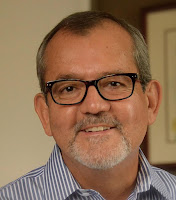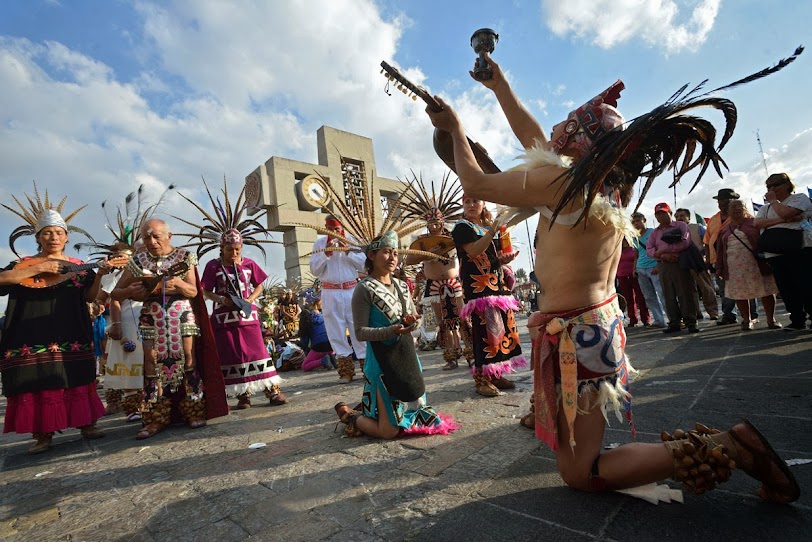Gentrification is Not Inevitable
by Richard Vásquez
Is there an alternative to gentrification? As gentrification sweeps through the Eastside, look at the power held by people acting with agency as individuals and in concert with one another to move the markers that signal where their interests end and redevelopment responding to a growing demand for proximity to the downtown core begins. It is a constantly moving target and a source of great consternation to members of communities with historically little hope of fighting back, much less defeating, gentrification. So what is the alternative?
Two words: social capital. The Kennedy School of Government approaches it this way: “Social capital may be defined as those resources inherent in social relations and networks which facilitate collective action.” Defined another way, it is the collective voice of a million souls and the pulse of a psychic force beating within a people whose determination is to build community and prosper where they are. Leveraging social capital can thus be used to position the markers on what is and isn’t acceptable change to a community by focusing the community’s voice and taking a seat at the policy making table.
Gentrification is the status quo seeking its path of least resistance. With a seat at the table for those usually left out or uninvited, at least the powers driving it will proceed with caution knowing that what they are destroying has a strong identity and an even stronger sense of place. The latter two represent a huge stick with which to approach the table when important decisions are being made; it might evenl help shift the tone of future gentrification conversations in communities such as Boyle Heights, Highland Park, El Sereno, Lincoln Heights and generally all of East Los Angeles.
So who currently occupies the seats at the table where the gentrification engine is powered? Landowners and speculators eager to cash in on rising property values. Residential and commercial real estate brokers who want to cash in on rising rents and lock-in above-market leases to ensure highest ROI on their property. Long-standing businesses with overlapping geographic ties to the community, like the USC medical complex and bio med campus in Boyle Heights. Residential developers who have run out of land in downtown who strong-arm policymakers into allowing them to squeeze hundreds of units into postage stamp sized lots under freeway off-ramps. And organized labor—whose interests extend far beyond the rank and file who may live in these communities and whose support for major developments is contingent on the promise of jobs for the scores of still powerful trade unions. These include, among many, the International Brotherhood of Electrical Workers (IBEW), a union that continues to hold tremendous influence over policy makers with regard to the establishment of redevelopment priorities.
And then there are the politicians, particularly, the city council member or members, who are the local powerbrokers and gatekeepers. They manage expectations of the Mayor’s office and oversee community interfacing with the legions of city departments with power to approve or deny permits and set the pace for gentrification in a given community. The council member, just as importantly, manages the interests of his colleagues and other policymakers at local, state and county levels who possess at least a peripheral interest in outcomes with ramifications that may affect their distinct corners of the city. The councilmember must keep his ear fixed to the ground in order to anticipate the slightest voter anxiety over the forward creep of gentrification and devise a plan to address it while curtailing it.
If this weren’t complicated enough, the council member is a servant with two masters: constituents, his committed voters; and his contributors, the monied interests around the table. After all, his voters insure his reelection and his contributors line his coffers while keeping his hopes alive for life after term limits force him from office. Where does all this leave the “community?” Does the “community” really even have a seat at the table?
The short answer is: not really. Challenges emerge here and there when things boil over and the community takes action. For the most part, and apart from the council member’s response to “gentrification anxiety,” the “community” is just a voice in the desert, duly noted and filed. Most power players dismiss the community’s voice as a toothless “formality” that they must find a way to placate. It would not be far from the truth to say that they regard community reactions as nothing more than wallpaper and the cost of doing business, as evidenced by the extraordinary pace with which gentrification is now sweeping through the Eastside.
This doesn’t have to be the case. The “community” possesses a powerful asset that none of the other power players can match, and that is harnessed social capital. It was in fact, social capital that applied the brakes to the MTA’s hastily prepared and misguided plans for the redevelopment of Mariachi Plaza. It is what got a beautiful park built on a former brownfield site at the corner of Avenue 50 and York Boulevard in Highland Park. It ended Exide’s toxic lead contamination of working class Eastside neighborhoods.
Lately, it has energized the conversation and challenged the status quo around mobility and the built environment in neighborhoods across Los Angeles. On a national front, it is also what got Barack Obama elected president. In order to work, social capital has to be concentrated and targeted. It has to speak with a single voice. When it does, it exerts effective power.
Public benefit organizations like The California Endowment, East Los Angeles Community Corporation (ELACC), Leadership for Urban Renewal Network (LURN), Multicultural Communities for Mobility (MCM), among many others, have been hard at work cobbling together a network of community organizations into collaboratives that aggregate their combined agency to create real and measurable outcomes for improving health and the built environment throughout the oft-neglected Eastside.
These collaboratives are important because they gather every important community building enterprise under a trusted umbrella to address problems that affect everyone in the community. They work with all people in the community, not just voters, so they cull a fresh collection of conversations about how the “community” sees itself and what it wants to be.
Collaboratives create a narrative that gives voice to a story about place and community, neighborhood by neighborhood, person by person. An example of this would be the work is being undertaken by LURN and street vendors with the desired outcome of realigning citywide policy that acknowledges and legitimizes what we all already know; street food is safe, good, plentiful and convenient—and simultaneously—a benigh pathway to economic freedom for people eager to make the transition to the mainstream economy.
The community organizing happening around health for all, mobility, affordable housing, the built environment, school nutrition, education, clean air and renewable energy is generating a fortune in social capital that I believe can “buy” the “community” a place at the power table. Social capital is the collective goodwill that has been ignited by the very real process which occurs when people connect literally in their neighborhoods and communities. It is a very real and personal resource that could not be properly leveraged until now because it was not readily quantifiable.
With the emergence of these collaboratives, it is possible to multiply and bring to scale true social capital. When communities like Boyle Heights dare to resist gentrification, they are placed on the defensive by the media demanding they explain what they would do instead. With a seat at the table, their social capital can be invested in media to turn the tables and shift the conversation away from the allleged inevitability of gentrification to demand that gentrifiers explain why the Eastside is now such a “good business opportunity” and how people who live there today benefit from this new found bulwark of prosperity.
After all, wasn’t that the lesson learned the last time the powers sat down to carve up neighborhoods on the Eastside when wealthier communities rejected the idea of having a tangled web of off-ramps erected in their own backyards?
“Community building” has become a buzz word for effective and intentional community organizing. As professional community organizers, the young people who are the architects of these collaboratives are working for more than a living wage, they are working to accumulate wealth in the form of social capital.
They have seen it work, and in the end, they know that it is the only way to disrupt the status quo. And when you do that, anything can happen.
Richard Vasquez lives in Highland Park, where he was raised, and writes from the intersection of marketing and community building. You can reach him at: richard@vasquezassociates.com





Comments
Post a Comment